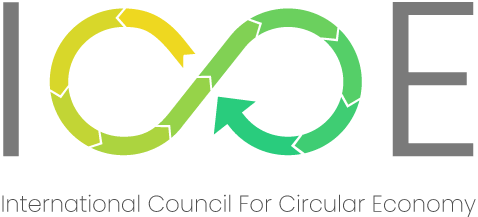India’s Next Edge in Sustainable Waste Management
It’s 6:00 AM in a small town in Madhya Pradesh. As the first rays of sunlight touch the narrow streets, the municipal commissioner, a few ward officials, and a group of sanitation workers begin their morning visit. These are not ceremonial rounds, they are sharp, observational walks meant to evaluate one of the most crucial functions of urban life: waste segregation at source and collection discipline. In this town of under 1 lakh population, the dream of a circular economy doesn’t begin in a conference room, it begins in a lane, at a doorstep, in a dustbin.
This morning ritual reflects a growing realization across India’s smaller cities and towns: circular economy is not an abstract theory, it is a hands-on, community-driven journey that begins with better waste management. And at the heart of that journey is a truth Indore has long demonstrated, source segregation is the soul of waste management.
Indore’s success story has become a national blueprint. The city, through a combination of rigorous 6-bin source segregation, decentralized processing, and a committed citizen, has achieved a level of efficiency that many large cities aspire to.
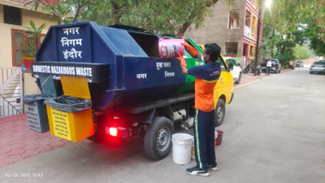
The city operates over 400 composting units at colony and market levels, processes organic waste through industrial-scale Bio-CNG plants, and tracks every vehicle in its waste collection fleet using IoT and ICCC-based systems. The municipal body collects and manages its waste in-house, eliminating reliance on contractors and ensuring accountability. Indore’s policies are reinforced by strong political leadership, consistent public engagement campaigns, and a smart use of digital tools.
Waste Segregation: The Daily Battle at the Doorstep
Every morning, when the door-to-door waste collection vehicles make their rounds, the success of the day rests on a simple but powerful gesture, whether a household has separated its waste. Wet, Plastic, E-waste, sanitary waste, and recyclables kept apart. This act alone determines the quality of processing, the economics of recovery, and the burden on the local landfill.
In small towns, this challenge is both harder and easier. Harder because infrastructure is minimal. Easier because populations are smaller, and community networks are tighter. What’s needed is relentless awareness, observation, and enforcement. Regular IEC campaigns, citizen meetings, school awareness programs, and women-led neighbourhood groups must be surrounded in the ULB’s weekly calendar.
The Role of Public Premises and Local Leadership
To truly embed the culture of segregation and circularity, government offices must lead by example. All municipal, panchayat, and line department offices should display waste-related information, maintain in-house segregation bins, and practice what they preach. When a citizen visits the bus stop, temple, tehsil, police station, or public park, they should see clean surroundings and functional dustbins. Public cleanliness must not be limited to contests, it must become routine civic discipline.

Managing What We Collect: Ownership of MRFs and Community-Driven Processing
Once waste is collected in a segregated manner, the real backbone of circularity is the Material Recovery Facility (MRF) and the compost plant. These centers perform the critical function of refining segregation, isolating high-value recyclables, and ensuring that only residual waste reaches landfills. In small towns, where employment opportunities are often limited, MRFs can become engines of economic empowerment.
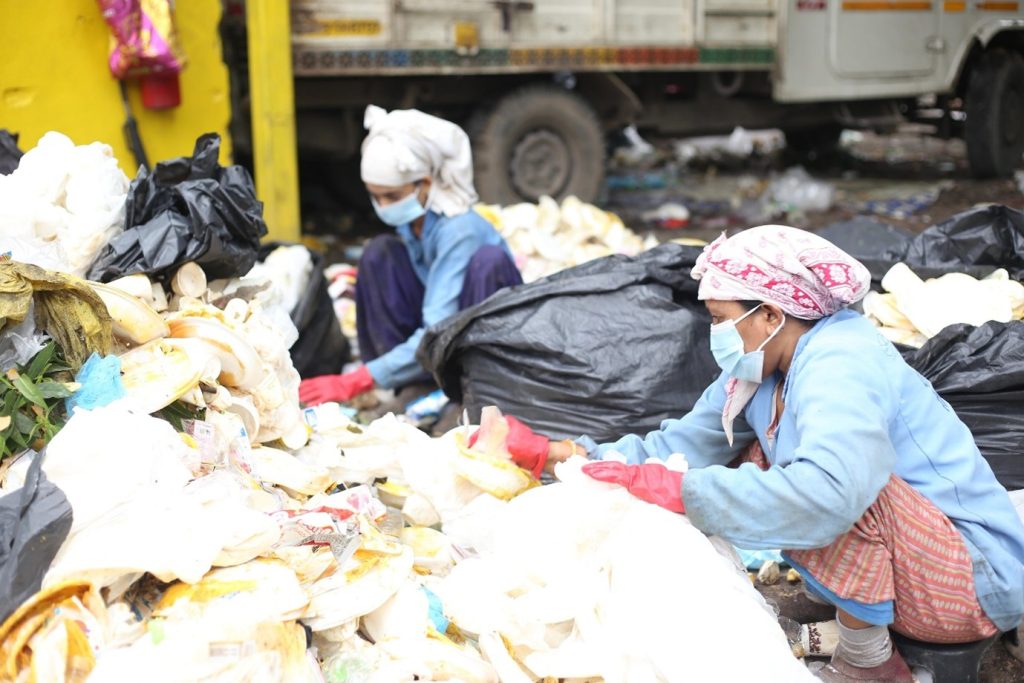
To maximize impact, MRFs must be financially structured as semi-autonomous units. Municipalities can adopt a Public-Private Partnership (PPP) model or enter into service-level agreements with women’s Self-Help Groups (SHGs), local cooperatives, or waste picker associations. Revenue from the sale of recyclables should be transparently recorded and partially reinvested into worker welfare, safety gear, insurance, and mechanized equipment. A dedicated ‘Waste-to-Value Fund’ can be seeded by the ULB to cover maintenance and incentivize high-performance centers.
Training programs are essential to ensure safe, dignified, and efficient operation. Women and waste pickers involved in MRFs should undergo regular capacity-building workshops covering topics such as dry waste handling, plastic grading, baling machine operations, health and hygiene protocols, digital inventory tracking, and first-aid. The goal is to transform informal labor into skilled green jobs with career growth.
To further institutionalize this model, ULBs should also establish “Vikalp Kendras” valuable item collection centers designed to intercept reusable or repairable items such as electronics, furniture, and textiles. These can be refurbished locally or routed to recycling markets. Positioned at market hubs or transfer stations, Vikalp Kendras become the community’s visible link to a functioning circular economy.
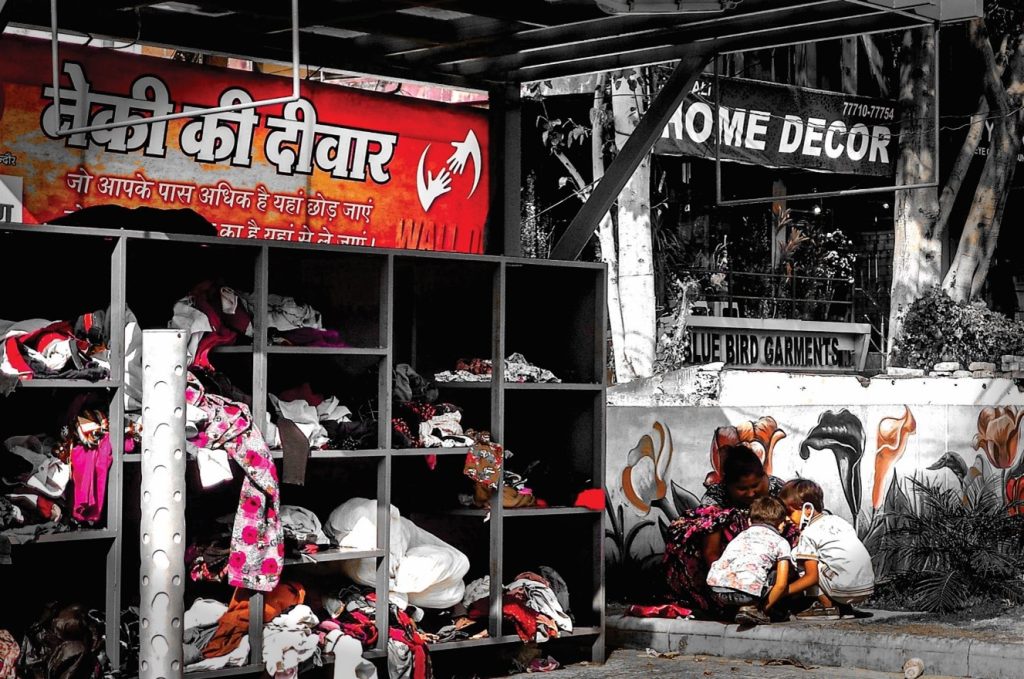
By giving local ownership, economic stake, and training, small towns can transform MRFs from passive processing sites into vibrant community enterprises, anchoring both circularity and livelihoods.
Once waste is collected in a segregated manner, the real backbone of circularity is the Material Recovery Facility (MRF). Here, segregation is fine-tuned, recyclables are separated, and reject waste is filtered out. In smaller towns, these centers must become hubs of local employment. Women’s groups, SHGs, and trained waste pickers can be engaged to operate MRFs with dignity, safety, and pride. Ownership of MRF operations by local groups ensures both sustainability and accountability.
Additionally, recognizing the unique challenges of smaller ULBs which often lack access to engineered landfills, it’s imperative that these towns segregate well, sort well, and process well. The goal must be zero-inert generation. Dry waste must be systematically processed into RDF (Refuse-Derived Fuel) and regularly channelized to cement plants, closing the loop and ensuring no backlogs at waste processing centers.
Waste is not just garbage. It’s employment, it’s raw material, it’s potential. When citizens see that plastic bottles collected from their homes are being baled, sold, and reused, they begin to understand the circular economy in practice.
Financial Sustainability: The Role of User Charges
One of the most difficult but necessary reforms in small towns is the imposition and collection of user charges. Waste management costs money, vehicles, fuel, staff, maintenance, processing, and disposal. In most ULBs, these costs are rising while revenue remains flat. To bridge the gap, towns must:
- Impose reasonable user charges based on waste volume.
- Ensure 100% collection through billing integration or doorstep collection.
- Educate citizens that paying for waste is not a tax, it’s a service cost.
- Reinforce compliance by linking sanitation grading with user charge payments.
Every ULB must maintain an updated ledger of waste collection expenses and income from user charges, scrap sales, and government grants. When income and expenses are monitored regularly, corrective actions can be taken before financial gaps widen.
Two excellent examples that prove this model’s success are Bhangya Panchayat in Sawer Block, Indore district, and Budni ULB in Sehore district, both of which are collecting more than 90% of user charges from households while delivering consistent and quality sanitation services.
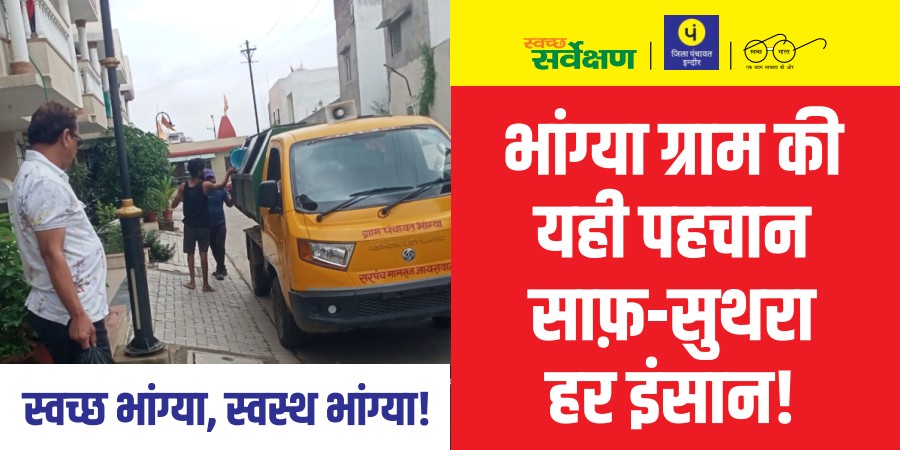
But financial systems only work if service quality builds public trust. Timely and visible service delivery is non-negotiable. Daily door-to-door collection, scheduled sweeping of streets, clear visibility of ‘No Garbage Vulnerable Points’ (No GVPs), maintenance of clean and usable public toilets, removal of stray animals from urban centers, and proper disposal of collected waste are basic yet powerful signals of municipal discipline. When citizens see the municipality doing its part, they are more likely to pay their share.
Furthermore, to encourage compliance and deter indifference, hefty fines should be imposed for open dumping, unsegregated waste, and littering in public places. These penalties should be visibly enforced and transparently recorded, serving both as a deterrent and a reinforcement of the city’s sanitation values.
Ultimately, financial sustainability in waste management depends not just on charging fees but on delivering trust, transparency, and consistent service quality.
Vehicle Optimization and Route Mapping
Effective waste management isn’t just about collection, it’s about logistics. Smaller towns often use oversized or under-utilized vehicles, leading to fuel wastage and manpower inefficiencies. Each collection route should be mapped in detail, and vehicles should be deployed based on waste generation volume, route length, population density, and road accessibility. Using compactors in narrow or low-density areas is unnecessary; instead, smaller electric or CNG-based mini trucks with lower operational costs and better movability are more effective.
To enhance community participation, a voice alert system must be integrated with every door-to-door vehicle to inform residents of its arrival. This reminder is crucial for ensuring timely waste handover. In instances where waste is not handed over from certain households, municipal officials must identify and personally visit those homes to ensure compliance. No household should be left out of the waste collection cycle.
Vehicles must also be equipped with clearly demarcated compartments to maintain segregation of waste during transit. Mixed transportation defeats the purpose of segregation at source. Upon arrival at the designated processing or disposal site, the waste should be emptied and processed on the same day to avoid backlogs and odor build-up, which can reduce community cooperation.
Above all, ensuring 100% household waste collection coverage is critical, and this can only be achieved through meticulous route planning. Every ULB should undertake monthly route audits and vehicle performance reviews. These checks must be documented and verified by designated officers to ensure consistency, accountability, and continuous improvement in the collection system.
Grievance Redressal: Closing the Feedback Loop
An effective waste management system is incomplete without a responsive digital grievance redressal mechanism. In smaller towns, where face-to-face governance is still practical, building a structured and transparent system to register, track, and resolve sanitation-related complaints is essential for accountability and citizen trust.
Every town must establish a multi-channel grievance platform (mobile app, helpline and ward office register) where citizens can report service gaps or sanitation violations. To make this actionable, a minimum of 10 clearly defined categories should be available for reporting, including:
- Non-arrival of door-to-door waste collection vehicle
- Uncleaned roads or public areas
- Overflowing or open drains
- Unattended garbage dumping spots
- Lack of segregation at source by municipal workers
- Stray animals in the street
- Non-functional or dirty public toilets
- Delay in processing waste at MRF or composting sites
- Burning of waste in public areas
- Poor condition of sanitation vehicles or staff behavior
Each complaint must be geo-tagged, time-stamped, and assigned to the concerned field staff with a defined resolution timeline. Weekly performance reports should be reviewed by officials, and unresolved grievances should trigger field inspections.
By making this feedback loop functional, small towns can not only correct lapses quickly but also build a data-driven system to identify chronic service gaps, track staff efficiency, and demonstrate responsiveness to the community.
Before Circularity, Waste Management Must Work
While circular economy is the long-term vision, basic waste management is the urgent necessity. A city cannot dream of energy recovery if it can’t ensure timely collection. Composting won’t happen if wet and dry waste are mixed. RDF production is not viable if plastics are not segregated.
So before aiming for circularity, a town must:
- Achieve 100% door-to-door collection
- Ensure 100% source segregation
- Maintain clean public spaces
- Set up at least one composting unit and one dry waste center
- Ban open dumping and burning
Only then can it move towards circularity.
The other side of the circular economy is not about managing waste but reducing its generation. Towns must adopt per capita waste reduction as a KPI. This involves:
- Promoting reusable bags, containers, and cloth napkins in households and markets
- Discouraging over-packaging in local businesses
- Installing community compost pits for leaf litter and garden waste
- Educating citizens about minimalism and responsible consumption
Transportation also plays a role. The more waste a city generates, the more trucks it needs. Fuel, manpower, and processing costs rise. But if citizens produce less, sort more, and reuse longer, the entire system becomes lighter, cleaner, and cheaper.
Empowering Startups for Local Solutions
India’s small towns need low-cost, high-impact solutions—and startups are perfectly positioned to provide them. Across the country, we are witnessing a new generation of innovators building decentralized, affordable, and context-specific technologies for waste management. For instance, Pune-based startup is developing mobile plastic recycling units that can serve cluster-based ULBs. Another startup offers compact modular composters that are ideal for schools and markets in small towns. Many companies have introduced IoT-enabled waste tracking, which, if adapted and made affordable, can revolutionize even the smallest gram panchayat’s efficiency.
The government must step up its role in nurturing these efforts by offering fiscal incentives, seed funding, pilot projects, and procurement support under programs like SBM-U 2.0 and AMRUT. A dedicated startup incubation scheme, aligned with the specific needs of waste management in small towns and villages, will help catalyze economical innovation.
Moreover, each district should have a technology showcase hub where startups can demonstrate their solutions and co-develop them with ULBs and panchayats. When local innovations solve local problems, adoption becomes faster and trust deeper. From smart bins to simplified MRFs and waste-to-craft units, the solutions are out there, waiting to be scaled through the right policy push.
India’s small towns need low-cost, high-impact solutions. Startups can offer modular composters, IoT-based bin sensors, mobile plastic shredders, and waste audit tools tailored for semi-urban setups. These innovations must be incentivized by the government under SBM-U and AMRUT schemes. Pilot sites, funding windows, and incubation support should be made available to any entrepreneur solving a sanitation challenge for Bharat.
Replication and Knowledge Exchange
Institutionalized learning hubs not only facilitate cross-district knowledge transfer but also help standardize practices and accelerate implementation.
State-level workshops must become platforms for sharing successful models, honoring field champions, and building a learning community across districts. What worked in Barwani can inspire Seoni. A breakthrough from Rewa can be replicated in Khandwa. Peer-to-peer learning among smaller towns will create momentum far beyond policy circles.
The Final Thought: Culture Before Technology
Circular economy is a cultural shift before it is a technological one. It’s about how a town views its waste, how it treats its workers, and how it mobilizes its citizens. Infrastructure will come. But first, the mindset must evolve.
We must stop viewing small towns as lagging behind in circularity. Instead, we should see them as the clean slate India needs—free of legacy systems, full of potential, and close to its communities.
Let’s start with what we can control: clean streets, segregated bins, paid services, and respected workers. Let the mornings begin with meaningful observations. Let every ward office become a Swachhata information center. Let every street vendor understand the cost of waste.

